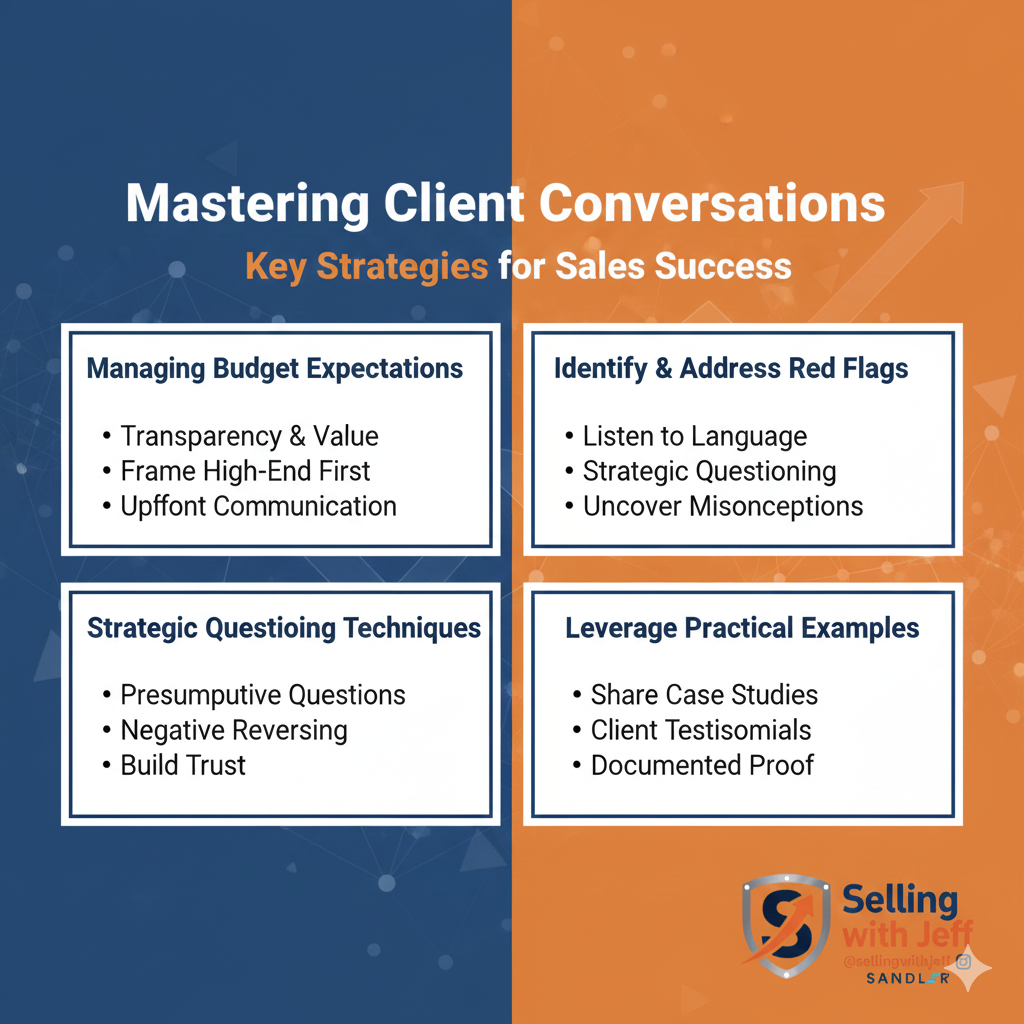Mastering Client Communication: Techniques for Sales Success

Discover essential strategies to enhance your client communication skills and drive sales success
The Power of Asking the Right Questions
In the realm of sales, asking the right questions is fundamental to understanding your client's needs and concerns. The art of questioning goes beyond mere curiosity; it is a strategic tool that can unveil deeper insights and foster stronger relationships. When engaging with clients, start with open-ended questions that begin with "what" and "how." These questions encourage clients to elaborate, providing you with a clearer picture of their expectations and pain points.
For instance, instead of asking, "Do you have any concerns?" try, "What concerns do you have about this project?" This subtle shift prompts a more detailed response, allowing you to address specific issues and demonstrate your commitment to understanding their perspective. Remember, effective questioning is not about interrogating but about genuinely understanding and assisting your client.
Understanding and Addressing Client Concerns
Understanding client concerns is pivotal in building trust and driving sales success. Clients often have underlying fears or uncertainties that may not be immediately apparent. It's your role to uncover these concerns and address them head-on. One effective technique is to ask permission to share your observations. For example, "Would it be alright if I shared my biggest concern about this approach?" This method not only shows respect for the client's opinion but also positions you as a considerate and insightful partner.
When addressing concerns, be empathetic and nurturing. Acknowledge their worries and provide reassurance by explaining how you plan to mitigate potential risks. This approach not only alleviates their fears but also reinforces your reliability and expertise.
Setting Clear Expectations for Smooth Transactions
Clear expectations are the foundation of any successful client relationship. From the onset, establish a timeline that outlines key milestones and decision points. Collaboratively create this timeline with your client, ensuring they understand the importance of each step in the process. This not only keeps the project on track but also empowers the client with a sense of ownership and involvement.
Additionally, formalize these expectations by having both parties sign off on the timeline and accept calendar invites for each milestone. This proactive approach prevents misunderstandings and ensures that both you and your client are aligned on the project's progress and deadlines. By setting clear expectations, you pave the way for smooth transactions and satisfied clients.
Handling Objections and Slow Decision-Makers Effectively
Objections and slow decision-makers are common challenges in sales, but they can be effectively managed with the right strategies. When faced with objections, respond with empathy and understanding. Use techniques like the Sandler Rule: "If you feel it, say it gently." For example, if a client is hesitant about a decision, you might say, "I understand your hesitation. Would it be helpful if I shared my biggest concern about delaying this decision?" This approach opens the door for honest dialogue and allows you to address the objection constructively.
Slow decision-makers can hinder project timelines, so it's crucial to maintain momentum. Regularly schedule follow-up meetings and set clear deadlines for decisions. Remind clients of the implications of delays, whether it's increased costs or extended project timelines. By consistently communicating the importance of timely decisions, you can keep the project moving forward and ensure client satisfaction.
Mastering client communication is an essential skill for any sales professional. By asking the right questions, understanding client concerns, setting clear expectations, and effectively handling objections and slow decision-makers, you can build stronger relationships and drive sales success. Stay driven, innovative, and trustworthy in your approach, and watch your client interactions transform into productive and rewarding partnerships.


